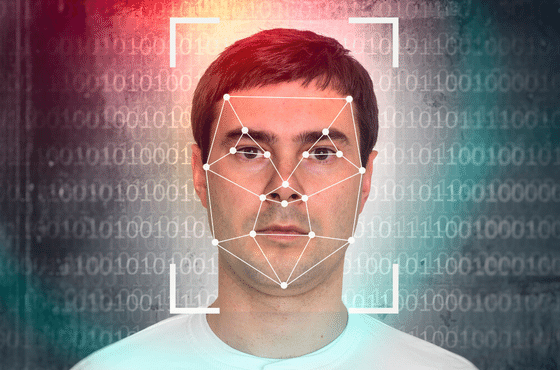
Introduction
Fraud is an ever-present risk for organizations, and the landscape is evolving at a rapid pace. In the digital age, securing assets is no longer just about protecting static data like usernames and passwords. It’s also about understanding behavior—how individuals interact with the systems they use. Welcome to the era of behavioral biometrics in fraud prevention, where innovative technology provides new layers of security by analyzing unique human traits. This blog post will explore what behavioral biometrics is, its applications, and how it can drastically alter the landscape of fraud prevention.
What Are Behavioral Biometrics?
Behavioral biometrics refers to the unique characteristics associated with the way individuals behave, rather than their physical characteristics (e.g., fingerprints or facial recognition). This could involve measuring the speed and rhythm of typing, the way you move your mouse, or even how you interact with your mobile screen. The underlying principle is that each individual has a unique way of interacting with digital devices, and recognizing those patterns can be crucial in authenticating a real user from a fraudulent one.
The Relevance in Fraud Prevention
The field of fraud prevention has been increasingly interested in behavioral biometrics for several reasons:
- Reduced False Positives: One of the significant challenges in traditional fraud prevention methods is the occurrence of false positives, where legitimate transactions are mistakenly flagged as fraudulent. This not only disrupts the user experience but also leads to potential revenue loss for businesses. Behavioral biometrics addresses this issue by providing a more nuanced and accurate method of user verification. By analyzing unique behavioral patterns such as keystroke dynamics, mouse movements, and touchscreen interactions, organizations can authenticate users more effectively, minimizing false positives and enhancing the overall security posture.
- Dynamic Verification: Unlike static authentication methods such as passwords or PINs, which can be easily compromised through theft or social engineering attacks, behavioral biometrics relies on dynamic characteristics inherent in an individual’s behavior. These patterns are highly personal and difficult to replicate, making it significantly challenging for fraudsters to bypass security measures. By leveraging behavioral biometrics, organizations can establish a robust authentication framework that offers greater resilience against fraudulent activities, safeguarding sensitive information and digital assets from unauthorized access.
- Real-time Analysis: One of the key advantages of behavioral biometrics is its ability to analyze user interactions in real-time. This real-time monitoring enables organizations to detect fraudulent activities as they occur, allowing for immediate intervention and mitigation measures. By leveraging advanced analytics and machine learning algorithms, behavioral biometrics solutions can identify anomalous behavior patterns indicative of potential fraud, triggering alerts or blocking suspicious transactions in real-time. This proactive approach enhances the efficacy of fraud prevention efforts, enabling organizations to respond swiftly to emerging threats and protect against financial losses and reputational damage.
Applications in Different Industries
Banking and Financial Services:
Behavioral biometrics play a critical role in enhancing security and fraud detection in the banking and financial services sector. By analyzing patterns of user behavior, such as typing speed, mouse movements, and transaction history, behavioral biometric systems can identify anomalous activities that may indicate fraudulent behavior. For example, if an account typically engages in small, local transactions but suddenly initiates a large international transfer, the system could flag this activity for further review, helping to prevent unauthorized access and financial loss.
Moreover, behavioral biometrics offer continuous authentication capabilities, allowing financial institutions to verify users’ identities throughout their entire session rather than relying solely on static credentials like passwords or PINs. This dynamic approach to authentication enhances security and reduces the risk of account takeover attacks, ultimately safeguarding customers’ assets and preserving trust in the financial system.
E-commerce:
In the highly competitive e-commerce landscape, understanding and analyzing consumer behavior is essential for optimizing the online shopping experience and preventing fraud. Behavioral biometrics enable online retailers to gain insights into user interactions at a granular level, such as scrolling speed, navigation patterns, and mouse movements.
By leveraging this behavioral data, e-commerce businesses can differentiate between genuine users and fraudulent actors, such as bots or malicious actors attempting to commit identity theft or payment fraud. For instance, behavioral biometric systems can detect anomalies in user behavior, such as unusually rapid scrolling or erratic mouse movements, which may indicate automated bot activity or fraudulent intent.
By identifying and mitigating fraudulent behavior in real-time, behavioral biometrics help e-commerce companies reduce chargeback rates, minimize revenue losses, and enhance the overall security of online transactions, thereby fostering trust and loyalty among customers.
Healthcare:
In the healthcare industry, protecting sensitive patient information and ensuring regulatory compliance are paramount concerns. Behavioral biometrics offer a secure and convenient method of authentication for accessing electronic medical records (EMRs) and other healthcare systems.
By analyzing patterns of user interaction, such as typing dynamics and touchscreen gestures, behavioral biometric systems can verify the identity of healthcare professionals and ensure that only authorized personnel have access to patient records and sensitive medical information. This helps prevent unauthorized access, data breaches, and identity theft, thereby safeguarding patient privacy and confidentiality.
Moreover, behavioral biometrics enable healthcare organizations to implement multi-factor authentication (MFA) without introducing additional friction to the user experience. By combining behavioral biometrics with other authentication factors, such as passwords or biometric identifiers, healthcare providers can establish robust security protocols while maintaining usability and convenience for authorized users.
Core Technologies Behind Behavioral Biometrics
- Keystroke Dynamics: Keystroke dynamics involves analyzing the unique rhythm and speed at which an individual types on a keyboard or touchscreen device. By capturing subtle nuances such as typing speed, key press duration, and intervals between keystrokes, keystroke dynamics algorithms create a distinctive profile for each user. This profile serves as a behavioral biometric identifier, enabling accurate user authentication and detection of suspicious activity based on deviations from the established typing patterns.
- Mouse Movement Analysis: Mouse movement analysis focuses on studying the behavioral characteristics of how a user interacts with a computer mouse or trackpad. This includes factors such as cursor movement speed, direction, acceleration, and patterns of clicks and scrolls. By analyzing these mouse movement dynamics, behavioral biometrics systems can generate unique user profiles, allowing for precise identification and verification of individuals. Additionally, mouse movement analysis helps detect anomalies or irregularities in user behavior, enabling proactive fraud detection and prevention measures.
- Touchscreen Interactions: Touchscreen interactions refer to the behavioral patterns exhibited by users when interacting with touch-enabled devices such as smartphones, tablets, and touch-sensitive displays. Behavioral biometrics systems capture various aspects of touchscreen interactions, including the force applied during touch input, swipe gestures, tapping speed, and duration of touch events. By analyzing these touchscreen interaction patterns, behavioral biometrics algorithms create personalized user profiles, which are used for authentication and continuous monitoring of user activity. Touchscreen interaction analysis enhances security and usability in mobile applications and touchscreen-based systems, providing robust protection against unauthorized access and fraudulent activities.
- Gait Analysis: Gait analysis involves studying the unique walking patterns of individuals, which can be particularly relevant in mobile applications where devices are carried while walking. By analyzing accelerometer and gyroscope data from mobile devices, gait analysis algorithms extract distinctive features related to the user’s walking style, stride length, cadence, and acceleration patterns. This information is then used to create a behavioral biometric template for each user, enabling secure authentication based on their unique gait characteristics. Gait analysis adds an additional layer of security to mobile applications, offering robust protection against unauthorized access and fraudulent transactions, especially in scenarios where traditional authentication methods may be compromised.
Behavioral Biometrics and Machine Learning
Machine learning algorithms are often employed to build a reliable model of a user’s behavior. Over time, these models become increasingly accurate in detecting fraudulent activity. Machine learning can adapt to changes in a user’s behavior, making it a robust and reliable technology in fraud detection.
Implementation Challenges
- Privacy Concerns: The collection and analysis of behavioral data raise significant privacy concerns, particularly regarding the protection of user information and compliance with data protection regulations such as the General Data Protection Regulation (GDPR). Organizations must ensure that they have robust data governance practices in place to safeguard user privacy rights and adhere to regulatory requirements. This includes obtaining explicit consent from users for collecting and processing their behavioral data, implementing strong encryption and anonymization techniques to protect sensitive information, and establishing clear policies for data retention and deletion.
- Cost: Implementing advanced behavioral biometric systems can entail significant upfront costs, including investment in specialized hardware and software, deployment and integration expenses, and ongoing maintenance and support fees. However, while the initial investment may be substantial, the return on investment (ROI) in terms of reduced fraud losses and enhanced security posture can often justify the expenditure. Organizations must carefully evaluate the cost-benefit ratio of implementing behavioral biometrics and consider factors such as the potential impact on fraud mitigation, operational efficiency, and customer trust.
- User Adaptation: Behavioral biometric systems rely on capturing and analyzing patterns of user behavior to authenticate individuals accurately. However, users’ behavior may naturally evolve over time due to various factors such as changes in personal habits, physical conditions, or environmental influences. This presents a challenge for behavioral biometric systems, as they need to be dynamic and adaptive enough to accommodate these changes without compromising accuracy or triggering false alarms. Organizations must implement robust algorithms and machine learning techniques capable of continuously learning and updating user profiles based on evolving behavioral patterns, ensuring that the authentication process remains reliable and frictionless for users.
Conclusion
Behavioral biometrics offers a dynamic, robust, and real-time solution for fraud prevention. Its ability to continuously authenticate users during their interaction with a system makes it an invaluable tool in the current security landscape. While challenges do exist, the potential benefits—reduced fraud, enhanced user experience, and robust real-time security—make behavioral biometrics a game-changer in fraud prevention.
As technology continues to evolve, it is becoming increasingly integrated into fraud prevention strategies across multiple sectors. Its adaptability and learning capabilities ensure that it will remain a critical component in the fight against fraud for years to come. Therefore, understanding and adopting behavioral biometrics is not just an option but a necessity for organizations committed to robust, modern security measures.






